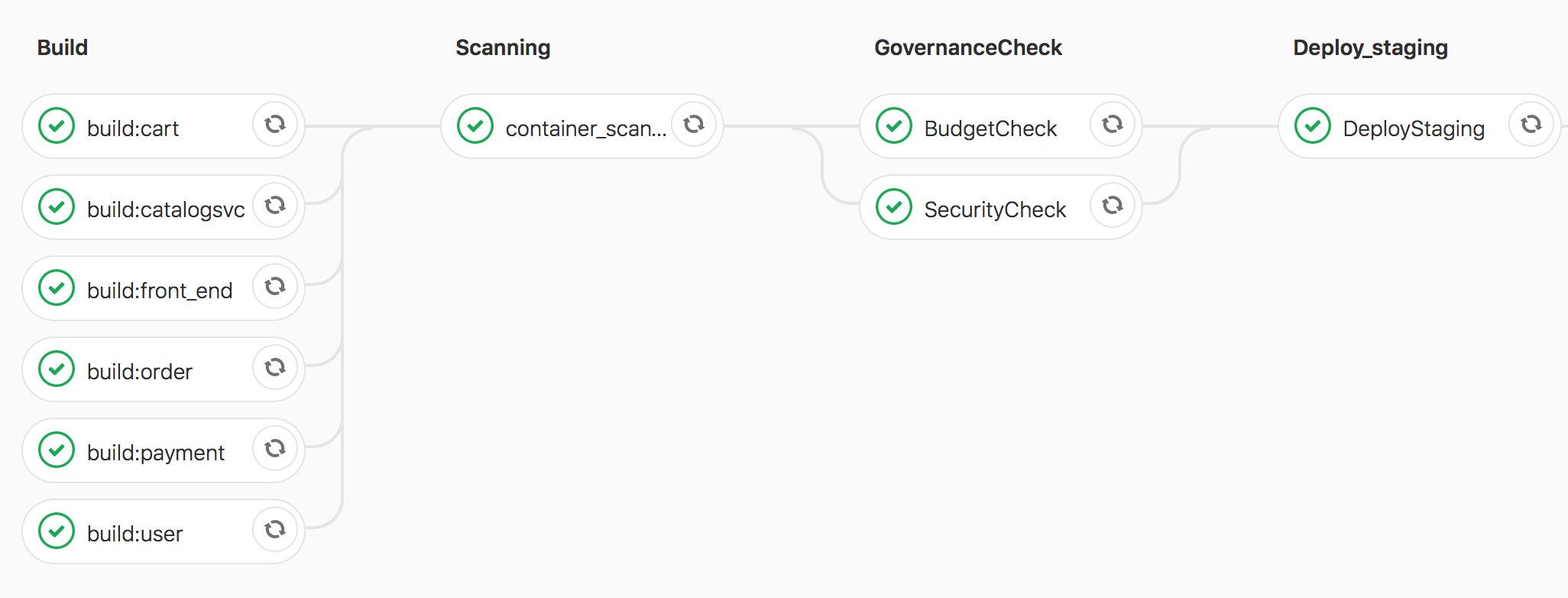Published on: August 26, 2019
5 min read
How to prevent deployments from overrunning your budget
Guest authors from VMware share how to include budget and resource checking into your continuous deployment with Cloudhealth and GitLab.

Managing deployments is a complex task and DevOps admins generally consider it a victory when a deployment is achieved and somewhat repeatable. Unfortunately this process doesn't give DevOps admins time to consider the impact of the outcome on the larger operations pipeline. We know the importance of Continuous Verification – it's just one of several day-two operations and best practices that need to be brought into the continuous deployment (CD) process to achieve efficiencies. But we also need to look at the budget.
Adding budget and resource checking into your CD
Most developers and DevOps admins don't consider the impact of their deployment on the budget. They also don't generally check if sufficient resources in AWS exist prior to deployment because, after all, aren't there "unlimited" resources on AWS?
Adding the proper budget and resource checks into the pipeline helps avoid:
- Potential rollbacks and clean-up actions
- Redeployment ("lift and shift") into other regions in AWS
- Long analysis to pinpoint budget overruns
Not having to deal with these tasks improves the DevOps admin's metrics, such as mean time to change (MTTC), deployment time, etc., and subsequently efficiency goes up.
Understanding the policy
Prior to implementing any of these checks, it’s important to understand the "policy." While every organization is different, and the iterations of "policy" are endless, there are some basic checks that should always be implemented:
- Ensure the project-specific budget is not already overrun
- Will this deployment exceed the project budget?
- Is the project already over project-specific limits and restrictions? (i.e. cannot use RDS, or can't have more than 10 EC2 instances in a deployment)
- Will this deployment exceed the project-specific resource policy?
With these basic checks in place, at least some initial sanity is achieved during a pipeline execution. More and more complex iterations can be added as more is learned about the project and processes are improved.
How do you do it?
Regardless of the policy complexity, implementing these checks can be easily accomplished with standard off-the-shelf tools like CloudHealth by VMware and GitLab.
- CloudHealth by VMware allows you to define "perspectives" specific to your project, create governance rules, and access this information through an API for easy integration into any CI/CD tool.
- GitLab allows you to easily add in scripts and/or pre-built code (containers) enabling any possible check against any potential external system.
In order to highlight how to implement this type of check into the CI/CD pipeline, we've delivered an example configuration using both CloudHealth and GitLab. We hope this provides a nice baseline to build from.

In summary
Although we've provided a baseline that we hope can be used for more complex policy checks in CD, convincing DevOps admins to implement this is another problem. Improving metrics should provide an incentive for DevOps admins but it is not sufficient for them to simply add budget and resource checks. While every enterprise has its own process and metrics, we recommend adding a budgetary efficiency metric for DevOps admins.
Using the configuration above, it’s easy to add in CloudHealth to continuously check the project's budget and utilization, and adding a DevOps budget metric will not only ensure that these checks are deployed but will also lead to more efficient deployments.
If you have any questions regarding this or any other issue, feel free to reach out to us @cloudjourneyio on Twitter!
About the guest authors
Bahubali (Bill) Shetti is the director of public cloud solutions for VMware Cloud Services at VMware. He leads a team of cloud architects that evangelize and develop solutions for improving public cloud operations (AWS/Azure/GCP). Bahubali was part of the initial team that developed and launched VMware Cloud Services. Previous to VMware, he was director of product management at VCE (now Dell) for Cloud Management Products. Between 2011-2014, Bahubali lead operations at Cumulus Networks, lead AWS cloud operations at several startups, and headed an open source routing software project. Between 2008-2010, Bahubali lead the cloud investment practice at Storm Ventures. He spent 9 years at Cisco in product management and business development. He holds an M.S. in Information Networking from Carnegie Mellon and a B.S. in Electrical Engineering from Rutgers.
Tim Davis is a cloud advocate at VMware where he focuses on public cloud operations and cloud native applications. He provides consulting guidance to a wide range of customers on these topics and provides a bridge between customers and product teams at VMware. He also works to evangelize native cloud usage including AWS, Azure and GCP. Prior to his current role, he was a specialist systems engineer focused on VMware’s Networking and Security product line. Before VMware, Tim worked as a consultant and VMware architect at Dell Services, which wasone of the largest contracts held at the time. His background is in operations/management and architecture. He holds numerous industry certifications including from VMware and Amazon Web Services.

